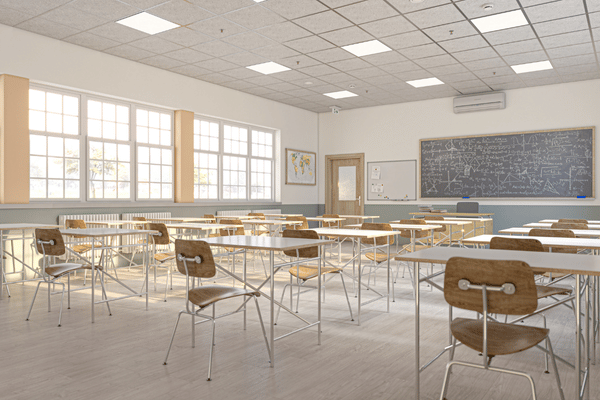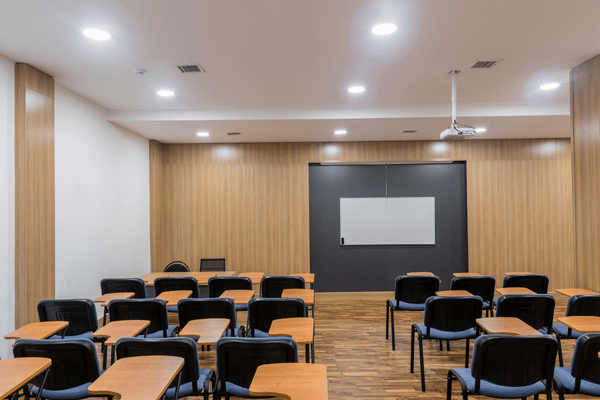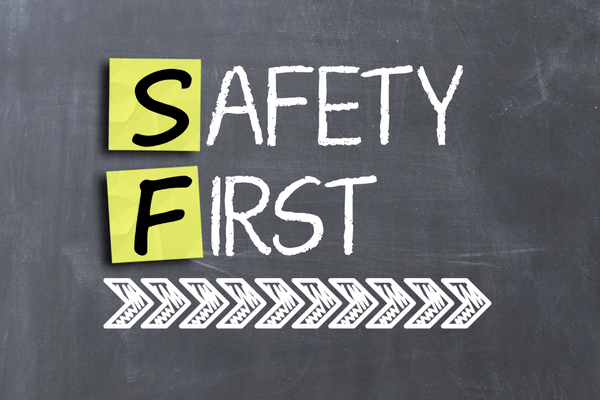BLOG

Designing the Future: Innovative Architectural Solutions for Schools
The Canvas of Tomorrow
Imagine stepping into a school where every wall, every corner, and every space whispers the promise of a bright future. We're not talking about your run-of-the-mill, brick-and-mortar school building. No, we're diving into the world of innovative architectural solutions that transform learning environments into vibrant, inspiring spaces. Ready to explore how we're designing the future? Let’s go!
Why Architecture Matters in Education
The Learning Environment
We all know the saying, "It's not the destination, it's the journey." When it comes to education, the journey happens within the walls of a school. The design of these walls can significantly impact students' learning experiences. An innovative architecture goes beyond aesthetics—it creates environments that foster creativity, collaboration, and critical thinking.
From Drab to Fab
Think back to your school days. Were they filled with excitement and inspiration, or were you trapped in a monotonous, colourless box? Innovative architectural solutions aim to break the mould, turning drab spaces into fab learning hubs that excite and engage students.
Key Elements of Innovative School Architecture

Flexible Learning Spaces
Multipurpose Rooms
Gone are the days of rigid, one-purpose classrooms. Modern school designs feature multipurpose rooms that can transform from a science lab to a drama stage in minutes. Flexibility is the name of the game, allowing spaces to adapt to various teaching methods and activities.
Movable Furniture
What's better than a classroom that can change its layout on a whim? Movable furniture allows teachers and students to reconfigure their space to suit the lesson at hand, encouraging dynamic and interactive learning.
Natural Light and Ventilation
The Sunshine Effect
Natural light isn't just a mood booster; it's a brain booster, too. Schools designed with large windows and skylights not only save on energy costs but also create a healthier, more stimulating environment for students.
Fresh Air for Fresh Minds
Proper ventilation is crucial for maintaining a healthy learning environment. Innovative designs incorporate natural airflow, reducing the reliance on artificial air conditioning and creating a fresher atmosphere conducive to learning.
Green Spaces and Outdoor Learning
Nature as a Classroom
Who says learning only happens indoors? Schools with integrated green spaces and outdoor classrooms harness the power of nature to boost students' cognitive functions and well-being. Gardens, green roofs, and outdoor learning areas provide hands-on learning experiences that traditional classrooms can't.
Sustainable Practices
Sustainability is more than a buzzword; it's a necessity. Modern school designs prioritize eco-friendly materials and practices, teaching students the importance of caring for their environment from a young age.
Technology Integration

Smart Classrooms
Interactive Boards
Chalkboards are so last century. Interactive boards bring lessons to life, making it easier for teachers to present information and for students to engage with it. These smart boards can connect to the internet, stream videos, and even allow students to participate in real-time quizzes.
Digital Learning Tools
From tablets to virtual reality headsets, the incorporation of digital learning tools is transforming how students absorb information. These tools make learning more interactive and personalised, catering to different learning styles and paces.
Connectivity
Wi-Fi Everywhere
In today's digital age, connectivity is as essential as air and water. Modern school designs ensure strong, reliable Wi-Fi coverage throughout the campus, enabling seamless access to online resources and learning platforms.
Collaborative Platforms
Platforms like Google Classroom and Microsoft Teams have become integral to the learning process. Schools equipped with the necessary infrastructure for these platforms enhance collaboration between students and teachers, both in and out of the classroom.
Safety and Security

Safe Haven
Secure Entrances
The safety of students is paramount. Innovative school designs incorporate secure entrances and exits, controlled access points, and surveillance systems to create a safe learning environment.
Emergency Preparedness
Architectural designs now include features that enhance a school’s emergency preparedness, such as clear evacuation routes, safe zones, and communication systems to ensure the well-being of all students and staff during emergencies.
Inclusive Design
Accessibility for All
Universal Design Principles
Schools are for everyone, regardless of physical ability. Universal design principles ensure that all students, including those with disabilities, can navigate the campus comfortably. Ramps, elevators, and accessible restrooms are just the beginning.
Sensory-Friendly Spaces
Innovative designs also cater to students with sensory processing issues. Sensory-friendly spaces provide a calming environment where these students can take a break and recharge, ensuring they can participate fully in their education.
Cultural Inclusivity
Celebrating Diversity
Schools are melting pots of cultures and backgrounds. Architectural designs that reflect this diversity through art, colour schemes, and cultural symbols foster an inclusive environment where every student feels represented and valued.
Community Engagement

Shared Spaces
Community Hubs
Schools aren't just for students; they're community hubs. Designing spaces that can be used for community events, meetings, and activities strengthens the bond between the school and its community.
Parent Involvement
Engaging parents in the educational process is crucial. Schools with designated areas for parents to meet, collaborate, and participate in school activities encourage greater parental involvement and support for students.
Partnerships with Local Businesses
Real-World Learning
Partnering with local businesses and organisations provides students with real-world learning opportunities. Schools designed with spaces for these collaborations, such as labs or studios, bridge the gap between education and industry.
The Future of School Architecture

Adaptable Designs
Preparing for the Unknown
The future is unpredictable, but our schools can be prepared. Adaptable designs allow schools to evolve with changing educational needs, technological advancements, and societal shifts, ensuring they remain relevant and effective.
Focus on Well-being
Holistic Environments
Future school designs will place a greater emphasis on the well-being of students and staff. This includes not only physical health through better air quality and natural light but also mental health through calming, supportive environments.
Integration with Technology
The Digital Revolution
The integration of advanced technology will continue to shape school architecture. From AI-driven learning platforms to virtual classrooms, the future of education will be a blend of physical and digital experiences.
Conclusion:

Innovative architectural solutions for schools are more than just bricks and mortar—they're the foundation for building dreams. By creating environments that inspire, engage, and support students, we're not just designing buildings; we're designing the future. So, let's think outside the box, break down the walls, and build schools that are as dynamic and promising as the students they serve.
FAQs: Your Questions Answered About Innovative School Architecture
1. Why is innovative architecture important for schools?
Imagine trying to learn in a dark, stuffy room with no windows. Not fun, right? Innovative architecture makes schools exciting and engaging places to be. It’s about creating spaces that inspire students, support diverse learning styles, and foster creativity. Think bright, airy classrooms, flexible furniture, and even outdoor learning areas. When students love where they learn, they learn better!
2. How do flexible learning spaces work?
Flexible learning spaces are like the Swiss Army knives of school design. They’re versatile and can be rearranged to fit whatever activity is happening. One moment, a room might be set up for a group project, and the next, it transforms into a space for a guest speaker or a creative workshop. Movable furniture and multipurpose rooms make it easy to adapt the environment to meet the needs of the lesson and the students.
3. What’s the deal with natural light and ventilation?
Natural light and fresh air are like the secret ingredients to a healthy, happy school. Big windows and skylights let in plenty of sunlight, which can boost mood and focus. Good ventilation ensures a steady supply of fresh air, keeping students alert and reducing the spread of germs. It’s all about creating a bright, breathable space that feels welcoming and energizing.
4. How does technology fit into modern school designs?
Tech in schools is a game-changer! Imagine classrooms with interactive boards where lessons come to life, and students can participate in real-time quizzes. Think about Wi-Fi that works everywhere on campus, so students can access digital learning tools and collaborate online with ease. Modern designs integrate all this tech seamlessly, turning schools into hubs of innovation and connectivity.
5. Can schools really be sustainable and eco-friendly?
Absolutely! Sustainable schools are designed with the environment in mind. This means using eco-friendly materials, incorporating renewable energy sources like solar panels, and creating green spaces like gardens and green roofs. Not only does this reduce the school’s carbon footprint, but it also teaches students the importance of sustainability and caring for our planet. It’s a win-win!

Designing the Future: Innovative Architectural Solutions for Schools
The Canvas of Tomorrow
Imagine stepping into a school where every wall, every corner, and every space whispers the promise of a bright future. We're not talking about your run-of-the-mill, brick-and-mortar school building. No, we're diving into the world of innovative architectural solutions that transform learning environments into vibrant, inspiring spaces. Ready to explore how we're designing the future? Let’s go!
Why Architecture Matters in Education
The Learning Environment
We all know the saying, "It's not the destination, it's the journey." When it comes to education, the journey happens within the walls of a school. The design of these walls can significantly impact students' learning experiences. An innovative architecture goes beyond aesthetics—it creates environments that foster creativity, collaboration, and critical thinking.
From Drab to Fab
Think back to your school days. Were they filled with excitement and inspiration, or were you trapped in a monotonous, colourless box? Innovative architectural solutions aim to break the mould, turning drab spaces into fab learning hubs that excite and engage students.
Key Elements of Innovative School Architecture

Flexible Learning Spaces
Multipurpose Rooms
Gone are the days of rigid, one-purpose classrooms. Modern school designs feature multipurpose rooms that can transform from a science lab to a drama stage in minutes. Flexibility is the name of the game, allowing spaces to adapt to various teaching methods and activities.
Movable Furniture
What's better than a classroom that can change its layout on a whim? Movable furniture allows teachers and students to reconfigure their space to suit the lesson at hand, encouraging dynamic and interactive learning.
Natural Light and Ventilation
The Sunshine Effect
Natural light isn't just a mood booster; it's a brain booster, too. Schools designed with large windows and skylights not only save on energy costs but also create a healthier, more stimulating environment for students.
Fresh Air for Fresh Minds
Proper ventilation is crucial for maintaining a healthy learning environment. Innovative designs incorporate natural airflow, reducing the reliance on artificial air conditioning and creating a fresher atmosphere conducive to learning.
Green Spaces and Outdoor Learning
Nature as a Classroom
Who says learning only happens indoors? Schools with integrated green spaces and outdoor classrooms harness the power of nature to boost students' cognitive functions and well-being. Gardens, green roofs, and outdoor learning areas provide hands-on learning experiences that traditional classrooms can't.
Sustainable Practices
Sustainability is more than a buzzword; it's a necessity. Modern school designs prioritize eco-friendly materials and practices, teaching students the importance of caring for their environment from a young age.
Technology Integration

Smart Classrooms
Interactive Boards
Chalkboards are so last century. Interactive boards bring lessons to life, making it easier for teachers to present information and for students to engage with it. These smart boards can connect to the internet, stream videos, and even allow students to participate in real-time quizzes.
Digital Learning Tools
From tablets to virtual reality headsets, the incorporation of digital learning tools is transforming how students absorb information. These tools make learning more interactive and personalised, catering to different learning styles and paces.
Connectivity
Wi-Fi Everywhere
In today's digital age, connectivity is as essential as air and water. Modern school designs ensure strong, reliable Wi-Fi coverage throughout the campus, enabling seamless access to online resources and learning platforms.
Collaborative Platforms
Platforms like Google Classroom and Microsoft Teams have become integral to the learning process. Schools equipped with the necessary infrastructure for these platforms enhance collaboration between students and teachers, both in and out of the classroom.
Safety and Security

Safe Haven
Secure Entrances
The safety of students is paramount. Innovative school designs incorporate secure entrances and exits, controlled access points, and surveillance systems to create a safe learning environment.
Emergency Preparedness
Architectural designs now include features that enhance a school’s emergency preparedness, such as clear evacuation routes, safe zones, and communication systems to ensure the well-being of all students and staff during emergencies.
Inclusive Design
Accessibility for All
Universal Design Principles
Schools are for everyone, regardless of physical ability. Universal design principles ensure that all students, including those with disabilities, can navigate the campus comfortably. Ramps, elevators, and accessible restrooms are just the beginning.
Sensory-Friendly Spaces
Innovative designs also cater to students with sensory processing issues. Sensory-friendly spaces provide a calming environment where these students can take a break and recharge, ensuring they can participate fully in their education.
Cultural Inclusivity
Celebrating Diversity
Schools are melting pots of cultures and backgrounds. Architectural designs that reflect this diversity through art, colour schemes, and cultural symbols foster an inclusive environment where every student feels represented and valued.
Community Engagement

Shared Spaces
Community Hubs
Schools aren't just for students; they're community hubs. Designing spaces that can be used for community events, meetings, and activities strengthens the bond between the school and its community.
Parent Involvement
Engaging parents in the educational process is crucial. Schools with designated areas for parents to meet, collaborate, and participate in school activities encourage greater parental involvement and support for students.
Partnerships with Local Businesses
Real-World Learning
Partnering with local businesses and organisations provides students with real-world learning opportunities. Schools designed with spaces for these collaborations, such as labs or studios, bridge the gap between education and industry.
The Future of School Architecture

Adaptable Designs
Preparing for the Unknown
The future is unpredictable, but our schools can be prepared. Adaptable designs allow schools to evolve with changing educational needs, technological advancements, and societal shifts, ensuring they remain relevant and effective.
Focus on Well-being
Holistic Environments
Future school designs will place a greater emphasis on the well-being of students and staff. This includes not only physical health through better air quality and natural light but also mental health through calming, supportive environments.
Integration with Technology
The Digital Revolution
The integration of advanced technology will continue to shape school architecture. From AI-driven learning platforms to virtual classrooms, the future of education will be a blend of physical and digital experiences.
Conclusion:

Innovative architectural solutions for schools are more than just bricks and mortar—they're the foundation for building dreams. By creating environments that inspire, engage, and support students, we're not just designing buildings; we're designing the future. So, let's think outside the box, break down the walls, and build schools that are as dynamic and promising as the students they serve.
FAQs: Your Questions Answered About Innovative School Architecture
1. Why is innovative architecture important for schools?
Imagine trying to learn in a dark, stuffy room with no windows. Not fun, right? Innovative architecture makes schools exciting and engaging places to be. It’s about creating spaces that inspire students, support diverse learning styles, and foster creativity. Think bright, airy classrooms, flexible furniture, and even outdoor learning areas. When students love where they learn, they learn better!
2. How do flexible learning spaces work?
Flexible learning spaces are like the Swiss Army knives of school design. They’re versatile and can be rearranged to fit whatever activity is happening. One moment, a room might be set up for a group project, and the next, it transforms into a space for a guest speaker or a creative workshop. Movable furniture and multipurpose rooms make it easy to adapt the environment to meet the needs of the lesson and the students.
3. What’s the deal with natural light and ventilation?
Natural light and fresh air are like the secret ingredients to a healthy, happy school. Big windows and skylights let in plenty of sunlight, which can boost mood and focus. Good ventilation ensures a steady supply of fresh air, keeping students alert and reducing the spread of germs. It’s all about creating a bright, breathable space that feels welcoming and energizing.
4. How does technology fit into modern school designs?
Tech in schools is a game-changer! Imagine classrooms with interactive boards where lessons come to life, and students can participate in real-time quizzes. Think about Wi-Fi that works everywhere on campus, so students can access digital learning tools and collaborate online with ease. Modern designs integrate all this tech seamlessly, turning schools into hubs of innovation and connectivity.
5. Can schools really be sustainable and eco-friendly?
Absolutely! Sustainable schools are designed with the environment in mind. This means using eco-friendly materials, incorporating renewable energy sources like solar panels, and creating green spaces like gardens and green roofs. Not only does this reduce the school’s carbon footprint, but it also teaches students the importance of sustainability and caring for our planet. It’s a win-win!
FAQS
What services do EE Architects in Chiswick West London typically offer?
At EE Architects in Chiswick, West London we offer a comprehensive range of services including residential and commercial architecture, interior design, educational building design, and renovations. We provide consultations to understand client needs, create detailed design plans, and manage the entire construction process. EE-Architects excels in these areas, ensuring each project is tailored to meet specific client requirements with a focus on sustainability and innovation.
How do I choose the best architects in West London for my project?
Choosing the best architects in Chiswick, West London or beyond involves evaluating their experience, portfolio, and client reviews. It's important to select an architect who understands your vision and can provide tailored solutions. EE-Architects stands out due to its extensive experience, innovative designs, and commitment to sustainable practices, making it an excellent choice for various architectural projects.
What should I expect during an architectural consultation with EE Architects in Chiswick?
During an architectural consultation with one of our experts, expect to discuss your project vision, budget, and timeline. The architect will provide insights and suggestions based on their expertise. EE-Architects offers thorough consultations, ensuring a clear understanding of client needs and providing expert advice to help shape the project effectively.
Are eco-friendly architectural designs available with EE Architects?
Yes, eco-friendly architectural designs are readily available with EE Architects. These designs focus on sustainability, energy efficiency, and the use of environmentally responsible materials. EE-Architects is known for its commitment to eco-friendly architecture, integrating sustainable practices into every project to minimise environmental impact while enhancing aesthetic appeal.
Can EE Architects in Chiswick, West London handle both residential and commercial projects?
Yes, EE Architects in Chiswick, West London are equipped to handle both residential and commercial projects. We possess the expertise to design functional and aesthetically pleasing spaces for various purposes. EE-Architects offers specialised services for both sectors, ensuring that each project, whether a home or a commercial space, meets the highest standards of design and functionality.
Residential Architects
Commercial Architects
Educational Architects
Landscape Architects
Renovation Architects
Interior Design
Renovation
Construction
Master-Planning
Residential Projects
Commercial Projects
Education Project
Community Projects
International Projects

